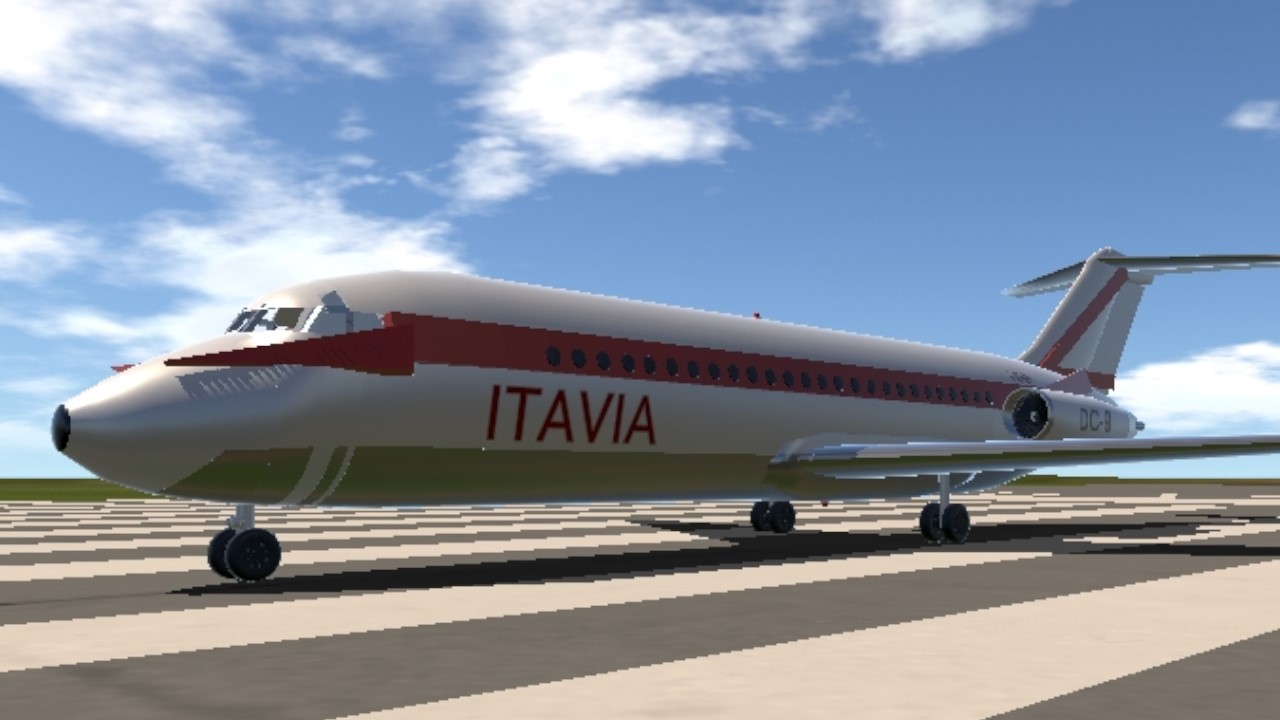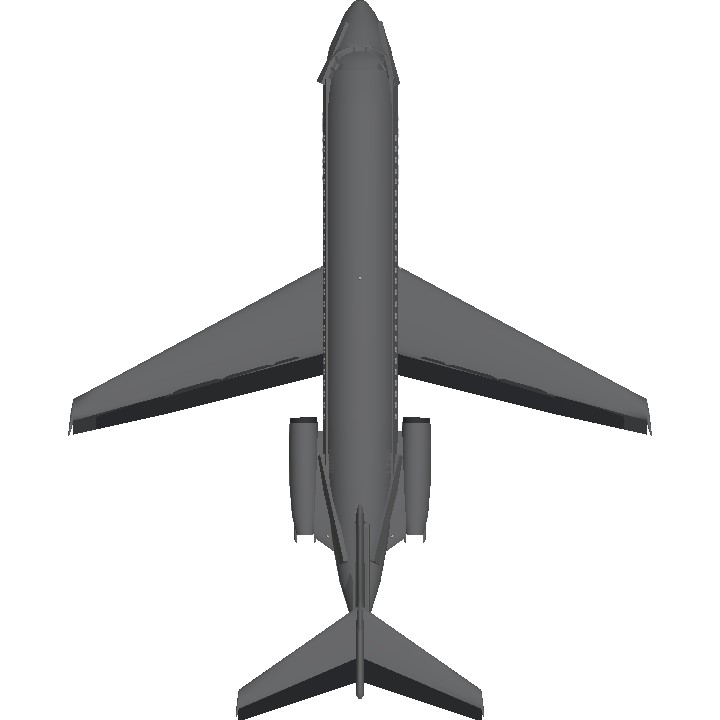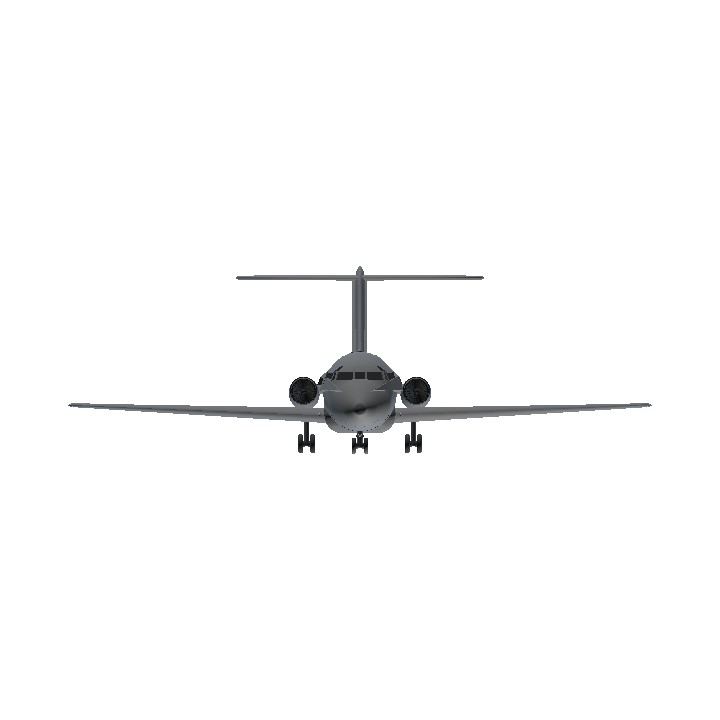Douglas DC-9
The McDonnell Douglas DC-9 is an American five-abreast, single-aisle aircraft designed by the Douglas Aircraft Company. It was initially produced as the Douglas DC-9 prior to August 1967, after which point the company had merged with McDonnell Aircraft to become McDonnell Douglas. Following the introduction of its first jetliner, the high-capacity DC-8, in 1959, Douglas was interested in producing an aircraft suited to smaller routes. As early as 1958, design studies were conducted; approval for the DC-9, a smaller all-new jetliner, came on April 8, 1963. The DC-9-10 first flew on February 25, 1965, and gained its type certificate on November 23, to enter service with Delta Air Lines on December 8. The DC-9 is powered by two rear-mounted Pratt & Whitney JT8D low-bypass turbofan engines under a T-tail for a cleaner wing aerodynamic. It has a two-person flight deck and built-in airstairs to better suit smaller airports. The aircraft was capable of taking off from 5,000 ft runways, connecting small cities and towns in the jet stream of air travel where jet service was previously impossible. The Series 10 aircraft are 104 ft (32 m) long for typically 90 coach seats. The Series 30, stretched by 15 ft (4.5 m) to seat 115 in economy, has a larger wing and more powerful engines for a higher maximum takeoff weight (MTOW); it first flew in August 1966 and entered service in February 1967. The Series 20 has the Series 10 fuselage, more powerful engines, and the Series 30's improved wings; it first flew in September 1968 and entered service in January 1969. The Series 40 was further lengthened by 6 ft (2 m) for 125 passengers, and the final DC-9-50 series first flew in 1974, stretched again by 8 ft (2.5 m) for 135 passengers. When deliveries ended in October 1982, 976 had been built. Smaller variants competed with the BAC One-Eleven, Fokker F28, and Sud Aviation Caravelle, and larger ones with the original Boeing 737.
The original DC-9 was followed by the second generation in 1980, the MD-80 series, a lengthened DC-9-50 with a larger wing and a higher MTOW. This was further developed into the third generation, the MD-90, in the early 1990s, as the body was stretched again, fitted with V2500 high-bypass turbofans, and an updated flight deck. The shorter and final version, the MD-95, was renamed the Boeing 717 after McDonnell Douglas's merger with Boeing in 1997; it is powered by Rolls-Royce BR715 engines. The DC-9 family was produced between 1965 and 2006 with a total delivery of 2441 units: 976 DC-9s, 1191 MD-80s, 116 MD-90s, and 155 Boeing 717s. As of August 2022, 250 aircraft remain in service: 31 DC-9s (freighter), 116 MD-80s (mainly freighter), and 103 Boeing 717s (passenger), while the MD-90 was retired without freighter conversion.
Itavia Flight 870
On 27 June 1980, Itavia Flight 870 (IH 870, AJ 421), a Douglas DC-9 passenger jet en route from Bologna to Palermo, Italy, crashed into the Tyrrhenian Sea between the islands of Ponza and Ustica at 20:59 CEST, killing all 81 occupants on board.
Known in Italy as the Ustica massacre ("strage di Ustica"), the disaster led to numerous investigations, as well as legal actions and accusations; it continues to be a source of controversy, including claims of conspiracy by the Government of Italy and others. Francesco Cossiga, the Prime Minister of Italy at the time, attributed the crash to the accidental shooting down by a French missile during a dogfight between Libyan and French fighter jets. In September 2023, former Italian prime minister Giuliano Amato declared that the accident was "part of a plan to shoot down the airplane of Gaddafi".
Cause
Cause? I don't know what to know theory?!
Missile attack
Parts of the Italian media alleged that the aircraft was shot down during a dogfight involving Libyan, United States, French and Italian Air Force fighters in an assassination attempt by NATO members on an important Libyan politician, perhaps even Libyan leader Muammar al-Gaddafi, who was flying in the same airspace that evening.[23] This version was supported in 1999 by Judge Rosario Priore,[24] who said in his concluding report that his investigation had been deliberately obstructed by the Italian military and members of the secret service, in compliance with NATO requests.[24]
According to the Italian media, documents from the archives of the Libyan secret service passed on to Human Rights Watch after the fall of Tripoli show that Flight 870 and a Libyan MiG were attacked by two French jets.
On 18 July 1980, 21 days after the Itavia Flight 870 crash, a Libyan MiG-23MS was found crashed in the Sila Mountains in Castelsilano, Calabria, southern Italy.[26] According to Libyan Air Force sources, the pilot was a victim of hypoxia. As his aircraft's autopilot was activated, it just kept flying straight and level until running out of fuel, and eventually crashed in the Sila Mountains.[10]
In 2008, Francesco Cossiga (Prime Minister when the accident occurred) said that Itavia Flight 870 had been shot down by French warplanes.[27] On 7 July 2008, a claim for damages was served on the French President.[citation needed]
In 2023, former Italian prime minister Giuliano Amato said that France downed the aircraft while targeting a Libyan military jet in an attempt to kill Muammar Gaddafi. Amato said that Italy tipped off Libya about the planned assassination and consequently Gaddafi did not board the Libyan military jet.


Specifications
General Characteristics
- Predecessor McDonnell Douglas DC-9-15 Southern Airways
- Created On Android
- Wingspan 47.2ft (14.4m)
- Length 58.2ft (17.7m)
- Height 15.1ft (4.6m)
- Empty Weight N/A
- Loaded Weight 17,002lbs (7,712kg)
Performance
- Power/Weight Ratio 3.965
- Wing Loading 73.0lbs/ft2 (356.6kg/m2)
- Wing Area 232.8ft2 (21.6m2)
- Drag Points 10176
Parts
- Number of Parts 220
- Control Surfaces 7
- Performance Cost 999




